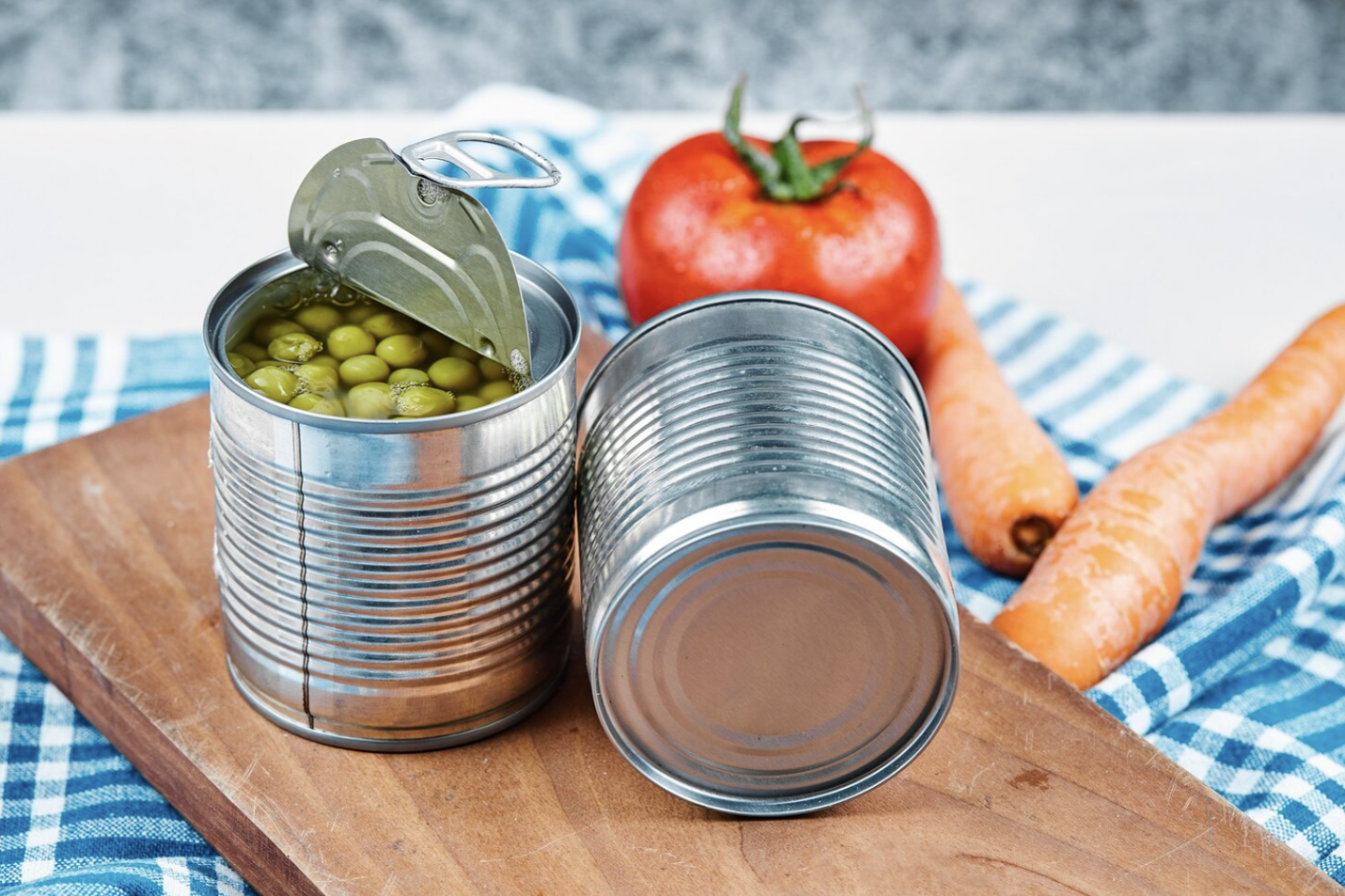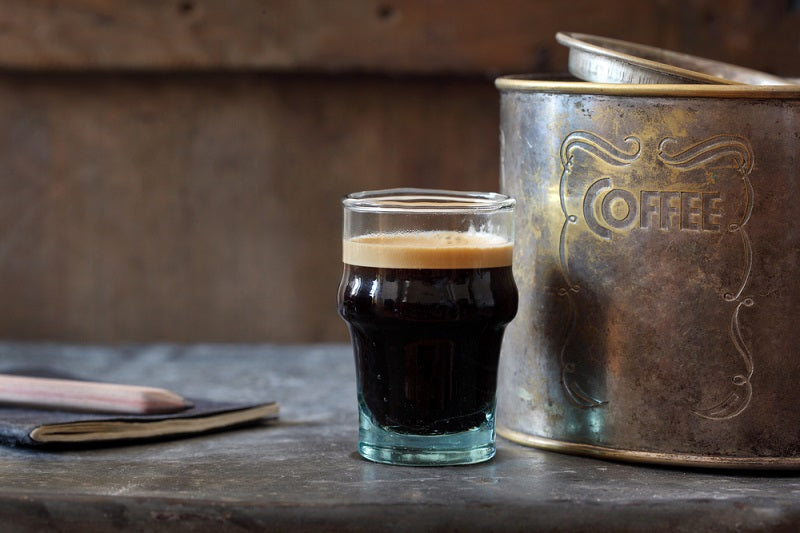Having reliable systems for handling, storing, and monitoring canned goods is crucial. Mishandled or spoiled canned ingredients can put customer health at risk and damage your reputation.
By implementing best practices around receiving, inspecting, organizing, and rotating canned food products, you can ensure safety and quality.
Inspecting Shipments
For food service operations like restaurants and cafeterias receiving canned food shipments, a thorough inspection of the delivered products should be the first priority before stocking any inventory.

Source: Freepik
Employees or managers responsible for accepting deliveries must examine each individual can, jar, and pouch for any signs of:
- Dents along the seams or edges
- Rust around the rims or any indication of leakage
- Bulges, swells, or abnormal shapes indicating gas buildup
- Loose, damaged, or compromised lids and seals
Any containers showing this type of external damage present a risk of botulism or other bacterial contamination and must be refused. The supplier should be notified and expected to replace or refund any defective products. When dealing with the safety of canned goods, businesses cannot afford to take chances with suspect integrity.
Once the delivery passes a full visible inspection, the canned products should promptly be moved into proper storage conditions right away. Leaving them in hot trucks or back rooms accelerates food deterioration and quality loss.

Source: Freepik
Exposure to high temperatures and direct sunlight can also degrade canned goods, so timely storage is imperative.
While the inspection process requires diligence and assertiveness with suppliers, it is a non-negotiable step. The safety risks of compromised tin cans are too great, especially given the severe illnesses botulism tin can cause.
By thoroughly examining all deliveries and refusing any defective tin cans, food service operators can protect their inventory's safety and quality, as well as the health of their customers.
Safe Storage Conditions
To maximize the shelf life and safety of their tin canned food inventory, managers of high-volume food service operations like restaurants, cafeterias, and catering companies must make the proper storage conditions an investment priority.
Ideally, canned goods should be kept in an environment maintained between 50-70°F with a stable relative humidity of around 65% to inhibit bacterial growth. This likely requires establishing a dedicated storage space separate from dry goods.

Source: Freepik
Some features to include:
- Sufficient ventilation and separation from heat sources such as ovens and hot water pipes that can spike temperatures. Storing tin cans long-term above 95°F exponentially escalates spoilage risks.
- Opaque shielding of sunlight which degrades food over time. UV light accelerates the breakdown of nutrients and antioxidants. Covering windows and using protective wraps or curtains can prevent this quality loss.
- Routine sanitation and inspection for any pest infestation that may contaminate inventory. Insect and rodent activity introduces serious health hazards. Develop cleaning and monitoring procedures.
- Shelving/pallets to avoid tin cans directly touching floors and walls where condensation and resulting corrosion occurs. Allow for airflow around inventory.
- Temperature and humidity sensors with automated controls and alert systems to proactively identify environmental fluctuations.
- Potentially insulation, cooling systems, and dehumidifiers to maintain the 50-70°F/65% RH zone. This represents an investment but pays dividends in reduced spoilage.
Other Things to Take Care Of
- Auditing humidity along with temperature is essential, as excess moisture catalyzes the growth of mold, bacteria, and pathogens. Food service operations should arm staff with psychrometers to spot-check conditions daily as part of opening procedures. Keep detailed logs.
- For large-scale food service providers, the capital investment in built-out canned food storage rooms with climate and humidity control pays dividends by virtually eliminating waste from spoilage and contamination. Protecting public health also mitigates liability and compliance risks.
- Smaller operations may not have the resources for extensive storage conditioning. But steps like coolers, dehumidifiers, frequent pest treatment, and rigorous cleaning procedures can optimize limited spaces to adequately protect canned inventory.
- Also utilize thermometers and hygrometers for staff to manually check temperatures and humidity levels twice daily. Making tin-canned food storage conditions a top priority, even on a budget, pays off in the long run by avoiding the massive costs associated with foodborne illnesses.
There is no definitive shelf life for properly stored canned goods. Environment matters. Developing storage best practices tailored to the size and capabilities of a food service operation reduces health hazards and provides peace of mind that important pantry staples like canned tomatoes, beans, vegetables, and seafood stay safe and appetizing for as long as possible after being opened and held for service.
Proper Organization
Once canned food deliveries are safely stored, food service operations should implement organization systems to streamline inventory management.

Source: Freepik
An orderly, tracked approach to arranging, rotating, and monitoring canned goods provides the following benefits:
- Neatly arranging cans and jars with labels facing outward aids quick visual identification of what is in stock for kitchen staff. Related items can be grouped together as well, such as beans, vegetables, fruits, etc. Clear categorization cuts down on searching time.
- Following "first-in, first-out" principles to use older existing inventory before newly received stock ensures nothing gets pushed back and expires before being opened. This reduces waste. Diligently rotating items forward maintains flow.
- Placing receipt dates on each product upon arrival, along with mapping the exact storage location in a tracking log, improves accountability. Detailed records enable auditing history in case any quality issues arise.
- Setting par stock to reorder levels tied to usage rates and shelf life for each canned good prevents shortages. Being supply-conscious is preferable to emergency orders. Canned items with limited shelf lives necessitate lower par levels.
- Routine checks of expiration dates, especially on seldom-used products, identifies if any dated stock needs fast-tracked to utilization. Never lose sight of expirations.
- Discussing usage and shelf life details with supply partners improves forecasting. Their insights help set optimal par levels.
Keeping canned food storage meticulously organized does require extra work but pays off via reduced waste, easier staff access, and full accountability. Documented processes enable continuous improvement as usage evolves.
With safe storage and organization best practices combined, food service operations can fully leverage canned goods as cost-effective ingredients while shielding customers and brands from the risks of compromised products. Tight controls are the foundation of excellence.
Ongoing Inspections

Source: RestoPack
Inspecting canned goods should be an ongoing process at various points:
- When shipments are received
- When products are being transferred from storage to the kitchen
- When opening cans before use in cooking
Look for dents, rust, bulging lids, leakage, sliminess, off-odors, and any other abnormalities. Discard any questionable cans. Do not taste suspicious products.
Addressing Botulism Concerns
While actual occurrences are extremely rare, botulism contamination is a severe hazard food service operations must be prepared for when handling canned goods inventory. Managers should ensure proper training and protocols are in place to safely handle suspected cases.
Botulism is an extremely potent neurotoxin produced by the bacteria Clostridium botulinum. Spores can survive the canning process under certain conditions and produce the toxin inside improperly processed cans. Even miniscule exposure can be fatal, making contamination an emergency situation.
If botulism contamination is possible in a suspect can or jar, staff should immediately isolate it using tongs and gloves without direct contact. Hazardous materials protocols should be activated to seal the item in heavy plastic or a leakproof container.
The sealed suspected product should then be fully submerged in a pot filled with water, with care taken to avoid splashing. The water must be heated to a vigorous boil for at least 30 minutes to deactivate the botulism toxin before disposal.
After boiling, the can or jar can be safely removed and must be discarded in a specially designated hazardous waste container, separate from standard trash which may be accessed by others. This is vital to prevent any unintended exposure.
Additionally, any surfaces, materials, tools, or kitchen areas potentially exposed to contents from the suspect can undergo sanitization following Centers for Disease Control guidelines. This includes thorough sterilization using bleach solutions or other disinfectants. Staff should wear proper protective gear during cleaning.
Maintaining Quality and Safety
Appropriate handling of canned foods involves receiving, storage, organization, inspection, and disposal. Good inventory control makes sure that the product does not get too old or reaches unhealthy levels of deterioration.

Source: Freepik
It is also crucial to have open communication with distribution partners such as Connie Tin Box. We ensure that any canned products delivered from us are compliant with food health and safety standards. Always let us know that you are having some challenges on your end. We also keep up with FDA and CDC warnings and regulations about canned foods.
With everyone committed to upholding proper standards, canned ingredients will continue delighting customers when they make it from can to table. Prioritizing safety supports delicious outcomes.
Conclusion
By implementing these protocols for receiving, storing, inspecting, and rotating canned goods, you can reduce food safety risks and protect your business. But success requires starting with reliable wholesale supply partners.
That's where working with Connie Tin Box pays dividends. Our team adheres to the industry's strictest quality assurance standards, so you receive optimally preserved ingredients batch after batch. We offer resources like storage guidelines and inventory management tools to set your kitchen up for success.
Contact Connie Tin Box today to learn how their decade of food safety expertise can strengthen your canned goods program. Email sunny@connietinbox.com to speak with a canned food specialist and get a quote tailored to your unique needs. Invest in quality tin cans from the start - your patrons will taste the difference.

 sunny@connietinbox.com
sunny@connietinbox.com 2-Piece Tin Can
2-Piece Tin Can 3-Piece Tin Can
3-Piece Tin Can Canned Fish
Canned Fish Canned Vegetables
Canned Vegetables Canned Fruit
Canned Fruit Canned Pet Food
Canned Pet Food

